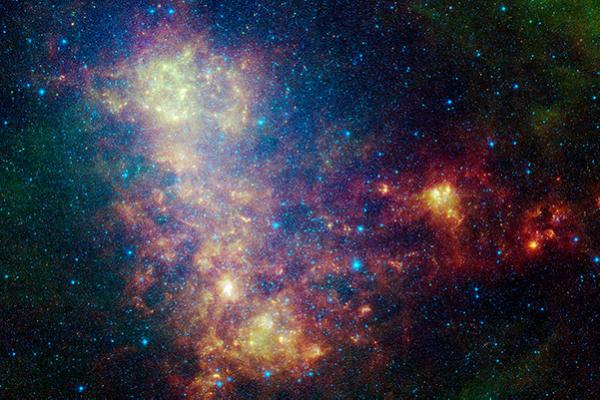
Revealing the Atomic Hydrogen and Magnetic Fields of the Small Magellanic Cloud with the Australian Square Kilometre Array Pathfinder
The evolution of galaxies is partially regulated by their infall and outflow of gas. Many simulations of galaxy formation and evolution have highlighted the importance of feedback in reproducing the observable Universe. Huge superbubbles and outflows, formed from the stellar winds and supernovae, dominate the observed structure of neutral hydrogen within many galaxies, including the nearby Small and Large Magellanic Clouds, which we can study with a physical resolution unmatched anywhere else in the Universe. As the most numerous galaxies in the Universe, dwarf galaxies may be important candidates for populating the intergalactic medium with enriched gas. Although star formation rates in dwarf galaxies can be lower than their more massive, starburst counterparts, these low mass systems have small gravitational potential wells and thereby find it difficult to maintain their star-forming material in the presence of intense stellar feedback. In this talk, I will present new atomic hydrogen (HI) data from the Australian SKA Pathfinder (ASKAP) on the Small Magellanic Cloud. Using these data we have discovered that the Small Magellanic Cloud (SMC) has massive stellar feedback-driven HI outflows. The outflows are comprised of cold filamentary gas extending up ~2 kpc from the main galaxy, with temperatures of T< 500 K and widths as small as 50 pc and appear to have a magnetic component. We estimate a significant atomic gas mass flux in the range 0.2 - 1 solar mass per year, which may contribute to feeding the Magellanic Stream. I will also discuss recent observations of magnetic fields in the SMC and how these impact our future plans for the Magellanic System with the Galactic ASKAP Survey.
